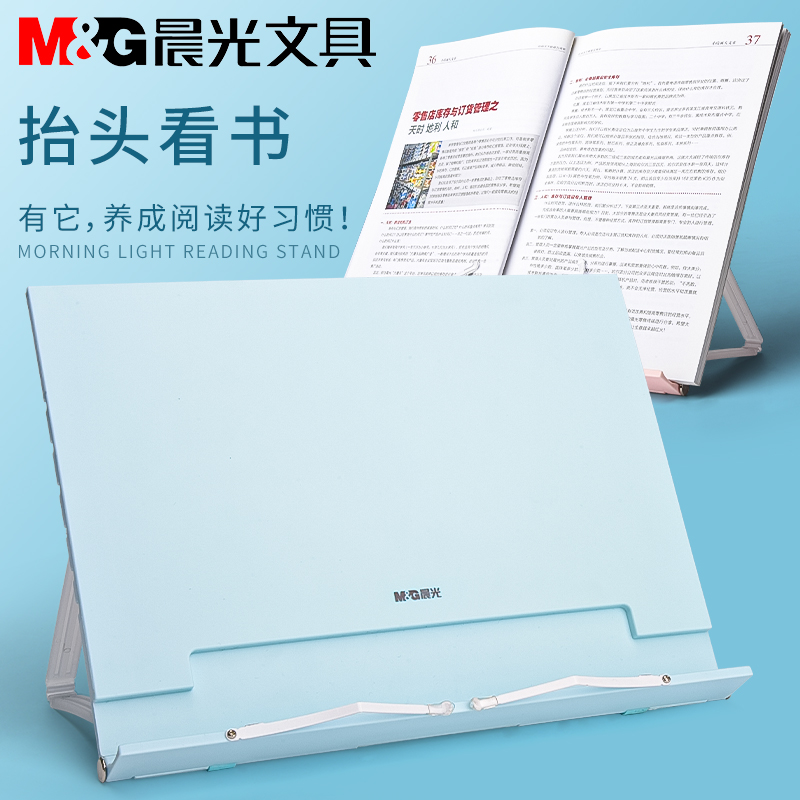培养孩子良好学习习惯:学习用品与阅读架的选购指南
峎迥匞
2024-10-29 01:22:55
0次
**培养孩子良好学习习惯:学习用品与阅读架的选购指南**
一、引言
在孩子的成长过程中,良好的学习习惯是至关重要的。为了帮助孩子建立良好的学习习惯,除了良好的教育环境外,合适的学习用品和阅读架也是不可或缺的。本文将为您详细介绍如何为孩子选购合适的学习用品和阅读架,以促进其学习进步。
二、学习用品的选购
1. 铅笔与橡皮:为孩子选择无毒、环保、无异味的铅笔和橡皮。铅笔应选择颜色鲜艳、粗细适中的款式,以便孩子握持。橡皮应选择易擦易洗、不易变形的款式。
2. 书包:书包是孩子上学必备的物品,应选择轻便、耐用、多功能的书包,以方便孩子携带书本和学习用品。
3. 作业本与练习册:选择纸张厚实、不易撕破的作业本和练习册,以保护孩子的视力。同时,应注意作业本和练习册的页边距要适中,方便孩子书写。
4. 彩色笔与画笔:为孩子提供多种颜色的笔和画笔,可以激发孩子的创造力和想象力。选择笔尖柔软、不易断水的彩色笔和画笔。 5. 字典与词典:为孩子准备一本字典和词典,以便在遇到生字或生词时查阅。 三、阅读架的选购 1. 材质:阅读架的材质应选择轻便、耐用、易于清洁的材质,如塑料或金属。 2. 稳定性:选择具有良好稳定性的阅读架,以确保孩子在阅读时书本不会滑落。 3. 可调节性:根据孩子的身高和阅读需求,选择可调节高度的阅读架,以便孩子在任何时候都能保持良好的阅读姿势。 4. 空间占用:考虑阅读架的空间占用问题,选择大小适中的款式,既不会占据过多空间,又能满足孩子的阅读需求。 四、综合建议 在选购学习用品和阅读架时,除了考虑以上提到的具体因素外,还要根据孩子的年龄、性格、兴趣等特点进行选购。同时,要定期检查学习用品和阅读架的使用情况,及时更换或修理损坏的物品,保持其良好的使用状态。 五、英文翻译 **How to Foster Good Learning Habits for Children: A Guide to Purchasing Learning Supplies and Reading Stands** Introduction: In the process of children's growth, good learning habits are crucial. Apart from a good educational environment, appropriate learning supplies and reading stands are also indispensable to help children establish good learning habits. This article will provide you with a detailed introduction on how to purchase suitable learning supplies and reading stands for children to promote their learning progress.Section 2: Purchasing Learning Supplies
1. Pencils and Erasers: Choose non-toxic, environmentally friendly, and non-odorous pencils and erasers for children. Pencils should be in bright colors and of appropriate thickness for children to hold. Erasers should be easy to erase and wash, and not easily deformed. 2. Schoolbags: Schoolbags are essential items for children going to school. Choose a lightweight, durable, and multifunctional schoolbag that is convenient for children to carry textbooks and learning supplies. 3. Assignment Books and Practice Workbooks: Choose assignment books and practice workbooks with thick and sturdy paper that is not easy to tear, which can protect children's eyesight. At the same time, pay attention to the margin of the assignment books and practice workbooks to be moderate, which is convenient for children to write. 4. Color Pencils and Brushes: Provide children with various colored pencils and brushes to stimulate their creativity and imagination. Choose soft-tipped color pencils and brushes that are not easy to dry out. 5. Dictionaries and Glossaries: Prepare a dictionary and glossary for children to consult when encountering unfamiliar words or phrases. Section 3: Purchasing Reading Stands 1. Material: Choose a lightweight, durable, and easy-to-clean material for the reading stand, such as plastic or metal. 2. Stability: Choose a reading stand with good stability to ensure that the book does not slide off when the child is reading.3. Adjustability: According to the child's height and reading needs, choose a reading stand with adjustable height so that the child can maintain good reading posture at any time.
4. Space Occupation: Consider the space occupation of the reading stand, choose a size that is neither too large nor too small, which can meet the child's reading needs without taking up too much space. Section 4: Comprehensive Suggestions When purchasing learning supplies and reading stands, take into account相关内容
热门资讯
多种类型学习用品深度解析
本文深度解析了多种类型学习用品,包括文具、电子设备、图书、益智玩具和专业用品等,阐述了它们在学生日常...
提升阅读体验的阅读架大赏
本文介绍了提升阅读体验的阅读架,包括简约实用、多功能、复古风格和智能阅读架等类型,强调了它们在提供舒...
打造高效学习环境:阅读架和必备...
选择合适的阅读架和必备学习用品是打造高效学习环境的关键。轻便耐用、可调角度的阅读架和笔纸、电子设备等...
学生党必看:物美价廉的学习用品...
学生党必备:推荐物美价廉的笔记本、笔、荧光笔和计算器等学习用品,以及桌面阅读架和折叠式阅读架等实用阅...
探索学习用品的秘密:阅读架与各...
摘要:本文探讨了阅读架与各类学习工具的搭配使用,如纸质书籍与阅读灯、电子设备与防蓝光膜等,以及它们如...
学习用品大揭秘:多功能阅读架如...
多功能阅读架:学生必备的实用学习工具。通过支撑书本、调节角度及防疲劳设计,成为学生好伙伴,提升学习效...
儿童学习用品与阅读架的选购技巧
选购儿童学习用品和阅读架需考虑年龄、材质、功能、耐久性及兴趣等,确保安全实用。阅读架要选稳定、舒适、...
传统与现代:不同年代的学习用品...
本文回顾了传统与现代学习用品和阅读架的演变历程,从铅笔、纸张到电子设备,反映了科技进步与人类对知识的...
学习用品与阅读架的搭配使用,提...
搭配学习用品与阅读架,提升学习效果。选择合适用品,利用阅读架调整角度防疲劳。纸质、电子阅读均可搭配,...
你的学习好帮手:多功能阅读架与...
多功能阅读架与学习用品是学习者的好帮手,它们具有多种功能,如角度调节、稳定性强、兼容性强等,能提高学...



